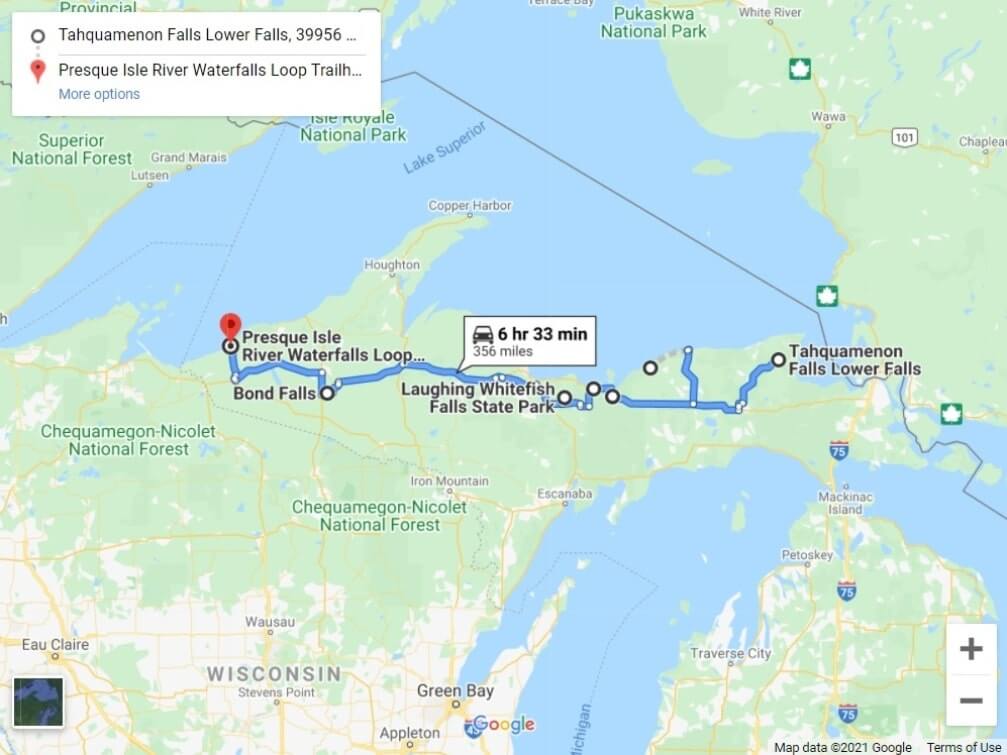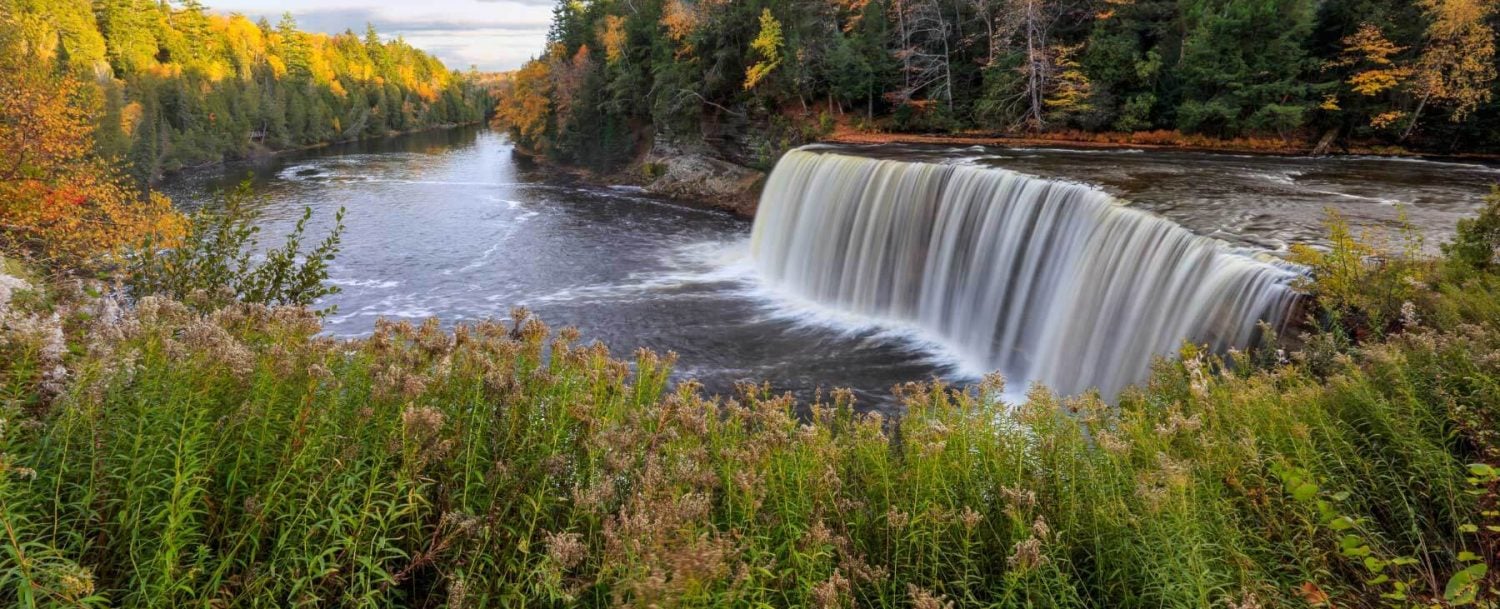Up Waterfall Trip, A Complete Guide
Up waterfall trips offer an exhilarating blend of adventure and natural beauty. This guide explores everything from meticulous planning and essential safety precautions to responsible environmental practices and capturing the unforgettable experience through photography and storytelling. Whether you’re a seasoned adventurer or a first-timer, we’ll equip you with the knowledge and confidence to embark on a safe and rewarding up-waterfall journey.
We’ll delve into the physical and mental demands of this unique trek, providing practical advice on preparation, training, and maintaining stamina. We’ll also address the crucial legal and ethical considerations, ensuring you respect the environment and local regulations. Finally, we’ll help you craft a compelling narrative to share your adventure, inspiring others to explore the wonders of waterfalls responsibly.
Planning Your Up Waterfall Trip
Embarking on an up-waterfall trek requires careful planning to ensure a safe and memorable adventure. This involves considering various factors, from choosing the right location to packing appropriate gear and understanding potential risks.
Essential Planning Steps for a Safe and Enjoyable Trip
Thorough planning is paramount. Begin by researching your chosen waterfall, checking for any access restrictions or permits required. Assess the difficulty level and ensure it aligns with your fitness and experience. Next, create a detailed itinerary, including estimated travel times, break points, and emergency contact information. Finally, share your itinerary with someone who’s not going on the trip, providing them with your expected return time.
Necessary Gear and Equipment
Appropriate gear is crucial for safety and comfort. This includes sturdy hiking boots with good ankle support, waterproof and breathable clothing layered for changing weather conditions, a backpack with ample space for water, snacks, and extra layers, a first-aid kit, a map and compass or GPS device, and a headlamp or flashlight.
- Sturdy hiking boots with ankle support
- Waterproof and breathable clothing layers
- Backpack with ample storage
- Water bottles or hydration pack
- High-energy snacks
- First-aid kit including blister treatment
- Map and compass or GPS device
- Headlamp or flashlight
- Sunscreen and insect repellent
- Emergency blanket or bivy sack
Packing Checklist for Varying Conditions
Packing for various weather conditions is essential. Consider the possibility of rain, sun, and changes in temperature throughout the day. Include extra layers of clothing, waterproof outerwear, and sun protection. Having extra food and water is also vital, especially if your trek takes longer than anticipated.
Safety Precautions for Up Waterfall Trekking
Up-waterfall trekking presents inherent risks. Understanding these risks and taking appropriate precautions is critical for a safe experience.
Potential Risks and Hazards
Slippery rocks, strong currents, and sudden changes in water levels are significant hazards. Falling rocks, unstable terrain, and exposure to the elements also pose threats. Understanding these risks allows for better preparation and mitigation.
Safety Measures to Mitigate Risks
Proper footwear is crucial for maintaining traction on slippery surfaces. Using trekking poles can provide extra stability and balance, especially on uneven terrain. Always be aware of your surroundings and avoid risky areas. Communicate clearly with your companions and stick together. Knowing basic first-aid and carrying a comprehensive kit is also essential.
Comprehensive Safety Plan
A well-defined safety plan is crucial. This should include procedures for handling injuries, unexpected weather changes, and getting lost. Establish clear communication protocols and pre-determined rendezvous points. Knowing how to use your GPS device or map and compass is also vital.
Choosing the Right Waterfall Location
Selecting the appropriate waterfall for your skill level and experience is vital. Researching potential locations beforehand is essential to ensure a safe and enjoyable trip.
Planning a family trip? Check out these awesome US trips in February for some winter fun! Maybe a visit to a warmer climate, or perhaps a snowy adventure? Afterwards, consider a fun virtual field trip! You can explore the San Diego Zoo from the comfort of your home with this amazing resource: virtual zoo field trip San Diego.
It’s a fantastic way to learn about animals without even leaving the house, perfect for a rainy day activity or supplementing your trip planning!
Comparing Waterfall Locations
Consider factors such as accessibility, difficulty level, water flow, and the overall terrain. Research different waterfalls to find one that aligns with your experience and fitness level. Some waterfalls may be more challenging than others, requiring specific skills and equipment.
Factors to Consider When Selecting a Waterfall

Water flow significantly impacts the difficulty of the trek. High water flow can create dangerous currents and make navigation challenging. Terrain also plays a crucial role, with steep inclines and uneven surfaces posing risks. Always consider the environmental impact and choose locations that minimize disruption to the natural habitat.
Importance of Thorough Research
Before embarking on your trip, thoroughly research the chosen location. Check for any local regulations, permits required, and potential hazards. Look for information from reliable sources, such as local tourism websites or experienced hikers.
Respecting the Environment During Your Trip
Responsible environmental practices are crucial to preserve the natural beauty of waterfalls for future generations. Minimizing our impact is vital for ensuring the sustainability of these ecosystems.
Responsible Environmental Practices
Practice “Leave No Trace” principles by packing out everything you pack in. Avoid disturbing wildlife and stick to established trails. Respect any signage or regulations in place to protect the environment.
Methods for Leaving No Trace
Proper waste disposal is critical. Pack out all trash, including food scraps and toilet paper. Avoid damaging vegetation or disturbing wildlife habitats. Stay on marked trails to minimize erosion and habitat disruption.
Guidelines for Sustainable Adventures
Choose sustainable transportation options when traveling to the waterfall. Respect the local community and their customs. Support local businesses that promote eco-tourism and environmental conservation.
Capturing the Experience: Photography and Storytelling
Documenting your up-waterfall adventure through photography and storytelling allows you to relive the experience and share it with others. High-quality photos and engaging narratives can inspire others to explore nature responsibly.
Capturing Stunning Photographs
Experiment with different angles and perspectives to capture the beauty and power of the waterfall. Use natural light to enhance your images and avoid harsh shadows. Consider using a tripod for sharper images, especially in low-light conditions.
Composing Impactful Images
Pay attention to composition, using leading lines and framing techniques to create visually appealing photos. Focus on capturing the details that make the waterfall unique, such as the texture of the rocks or the surrounding vegetation.
Documenting the Experience Through Storytelling, Up waterfall trip
Write a detailed account of your journey, highlighting the challenges you faced and the rewards you experienced. Include personal anecdotes and observations to make your story more engaging and relatable. Use vivid language to convey the beauty and wonder of the natural world.
Post-Trip Reflection and Sharing
Reflecting on your experience allows for personal growth and provides valuable insights for future adventures. Sharing your experiences responsibly inspires others to engage in similar activities while respecting the environment.
Reflecting on the Experience
Consider the challenges you faced, the lessons you learned, and the personal growth you experienced. Identify what you did well and what could be improved upon for future trips. Reflect on your connection with nature and the impact of the experience on your perspective.
Sharing the Experience Responsibly
Share your photos and stories on social media or create a travel blog. Be mindful of the location’s privacy and avoid disclosing sensitive information that could compromise the environment or local communities. Use your platform to promote responsible travel and environmental stewardship.
Inspiring Others
Share your experience with friends and family, inspiring them to engage in responsible and safe up-waterfall adventures. Promote sustainable tourism practices and encourage others to respect the natural environment.
Different Types of Up Waterfall Trips
Up-waterfall trips can range from guided tours to independent explorations, each offering unique advantages and disadvantages.
Planning a family trip? Thinking about a fun and educational experience? Check out this awesome virtual zoo field trip to the San Diego Zoo! virtual zoo field trip san diego It’s a great option, especially if you’re considering US trips in February, since it’s a fantastic indoor activity. Speaking of which, if you’re looking for ideas for US trips in February , there are tons of options depending on your budget and interests.
From snowy mountain escapes to warm beach getaways, February offers diverse travel possibilities across the country.
Guided Tours vs. Independent Exploration

Guided tours offer the benefit of expert knowledge and increased safety, particularly for less experienced trekkers. Independent exploration provides greater flexibility and freedom but requires more planning and self-reliance.
Advantages and Disadvantages
Guided tours may be more expensive but provide a structured experience with built-in safety measures. Independent exploration can be more cost-effective but requires thorough preparation and awareness of potential risks.
Specific Considerations for Each Type
Guided tours often have limitations on group size and may not cater to individual preferences. Independent exploration requires careful planning, including assessing fitness levels, equipment needs, and potential hazards.
The Physical and Mental Demands of Up Waterfall Trekking
Up-waterfall trekking demands both physical and mental stamina. Preparation and fitness are crucial for a safe and enjoyable experience.
Physical and Mental Demands
The physical demands include navigating uneven terrain, potentially carrying heavy packs, and enduring varying weather conditions. Mental stamina is equally important, requiring focus, problem-solving skills, and the ability to handle unexpected challenges.
Training Plan
A training plan should include cardiovascular exercises to improve stamina, strength training to build leg and core strength, and hiking practice to acclimatize to the demands of the trek. Mental preparation involves visualization, stress management techniques, and practicing decision-making under pressure.
Maintaining Stamina and Focus
Proper hydration and nutrition are essential for maintaining energy levels throughout the trek. Regular breaks and mindful moments can help manage stress and maintain focus. Prioritizing safety and enjoyment enhances the overall experience.
Legal and Ethical Considerations: Up Waterfall Trip
Understanding and adhering to legal and ethical guidelines is paramount for responsible up-waterfall trekking.
Relevant Laws and Regulations
Research and understand any laws and regulations concerning access to and activity around waterfalls. These may include permits, restrictions on certain areas, and regulations regarding waste disposal and wildlife interaction.
Ethical Considerations
Respect private property, avoid disturbing wildlife, and minimize your environmental impact. Be mindful of the local community and their customs. Practice responsible behavior to ensure the preservation of the natural environment for future generations.
Ensuring Compliance
Check for any signage or information regarding regulations before embarking on your trip. Obtain necessary permits if required. Follow Leave No Trace principles and practice ethical behavior to minimize your impact on the environment and local communities.
Building a Narrative About an Up Waterfall Trip
Crafting a compelling narrative about an up-waterfall trip involves immersing the reader in the journey, highlighting both the challenges and rewards.
Creating a Compelling Narrative
Describe the journey vividly, using sensory details to engage the reader. Detail the challenges encountered, emphasizing the problem-solving and resilience involved. Showcase the beauty and wonder of the natural world, highlighting the rewarding aspects of the experience.
Developing an Immersive Storyline
Use vivid language and descriptive imagery to transport the reader to the waterfall setting. Focus on creating a strong sense of place, capturing the atmosphere and emotions experienced throughout the journey. Weave personal anecdotes and reflections to connect with the reader on an emotional level.
Capturing the Essence of the Experience
Concisely convey the essence of the up-waterfall trip, highlighting the transformative aspects of the experience. Use clear and engaging language, avoiding technical jargon. Focus on conveying the beauty, wonder, and personal growth gained through the adventure.
Embarking on an up-waterfall trip is a rewarding experience that combines physical challenge with breathtaking natural beauty. By carefully planning your adventure, prioritizing safety, and respecting the environment, you can create lasting memories and share your journey with others. Remember to always research your chosen location thoroughly, prepare adequately, and appreciate the awe-inspiring power of nature. Safe travels!
Share this content:

